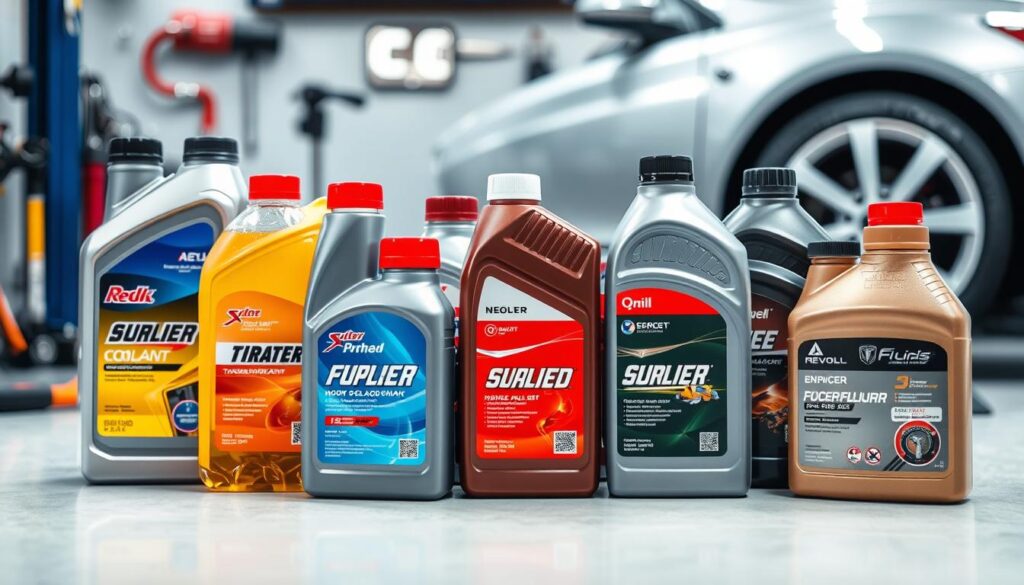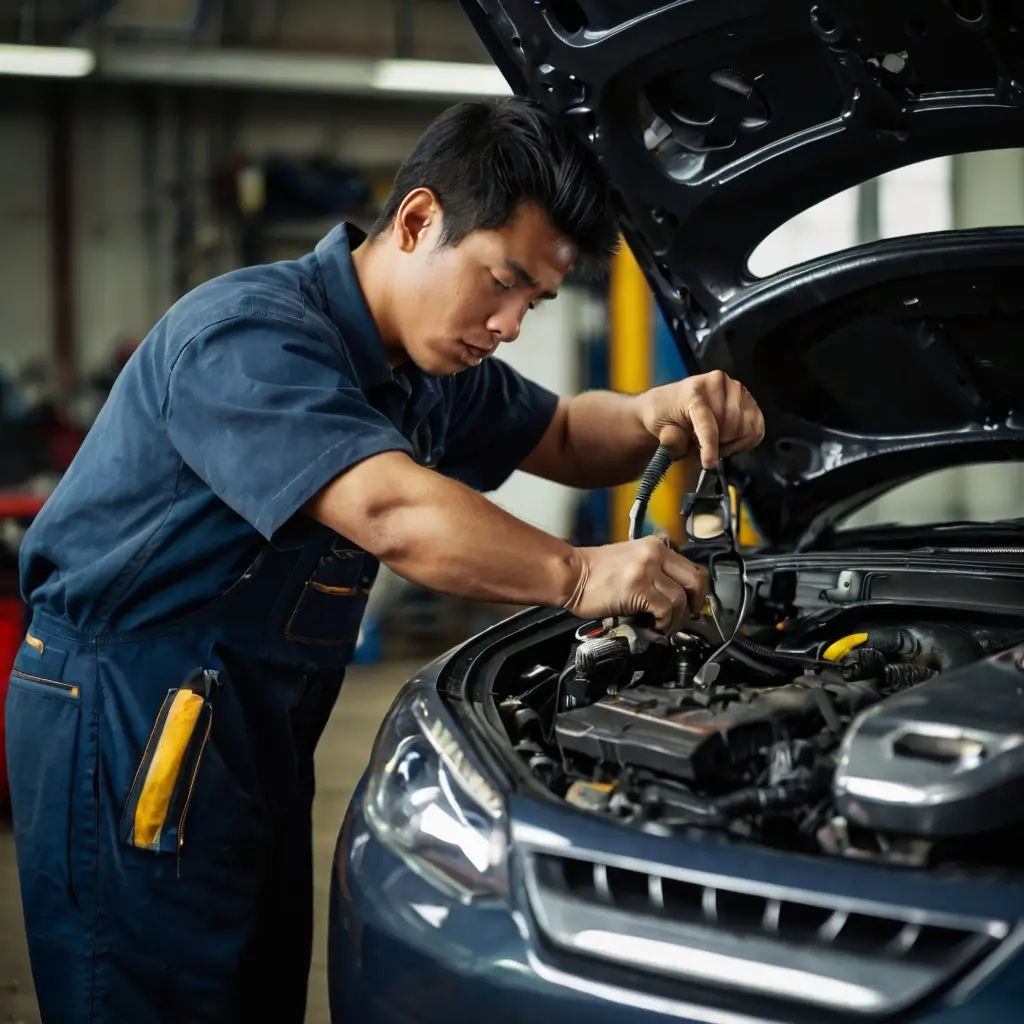Having a car can feel really freeing. But, it also means you have to take care of it. Many car owners make mistakes that can cost a lot, make the car run poorly, and even be unsafe. I’ve been there with unexpected breakdowns, and it’s really frustrating.
In this guide, we’ll talk about how bad car maintenance can be. We’ll also cover the most common mistakes and give you tips to keep your car running well. By knowing what to avoid and taking care of your car, you can avoid the stress and money problems that come with breakdowns.
In This Guide
Understanding the Impact of Poor Car Maintenance
Keeping your car in good shape is key to its performance and life span. Many drivers skip important maintenance tasks, leading to big problems later. Knowing the effects of bad car care can help you avoid expensive fixes and enjoy a better driving experience.
Long-term Consequences on Vehicle Performance
Ignoring regular maintenance can hurt your car’s performance in many ways. Not changing the oil can cause more engine wear, leading to less fuel efficiency and power. Also, not rotating or aligning tires can make your car harder to control and less responsive.
Financial Implications of Neglected Maintenance
The cost of neglecting car maintenance can be high. Ignoring warning signs or delaying repairs can lead to bigger, pricier problems. For example, a small brake issue can turn into a costly overhaul if not fixed early. Regular maintenance can save you money and keep your car running well for a long time.
| Maintenance Task | Consequence of Neglect | Estimated Repair Cost |
|---|---|---|
| Oil Change | Increased engine wear and tear | $500 – $2,000 |
| Tire Rotation | Uneven tread wear, handling issues | $100 – $400 |
| Brake Inspection | Brake system failure | $300 – $1,500 |
Understanding the long-term effects of bad car maintenance helps you take care of your vehicle. This way, you can keep it running at its best for many years.
Common Car Maintenance Mistakes to Watch Out For
Keeping your car in good shape is key to its long life and best performance. Sadly, many drivers make common mistakes that can cost a lot and make driving less fun. Here, we’ll look at some big car maintenance errors to help you steer clear of them.
One big mistake is replacing parts too soon. It’s right to fix problems fast, but swapping out parts before they’re due can be a money pit. Always check your car’s manual and watch its condition to know when to replace parts.
Another common error is skipping oil changes. Not getting your oil changed regularly can really hurt your engine. Keeping up with oil changes is key to your car’s health and how well it runs.
- Ignoring tire care is another big mistake. Keeping your tires properly inflated, rotated, and replaced is crucial for a smooth, safe drive. Missing out on these steps can cause your tires to wear out too fast, hurt your gas mileage, and even be dangerous.
Knowing about these common car maintenance mistakes and taking action can help your car last longer, run better, and save you from expensive fixes later. A well-kept car not only drives better but also makes driving safer and more fun.
The Dangers of Skipping Regular Oil Changes
Regular oil changes are key to keeping your car running well. But, many people forget to do this important task. Skipping oil changes can damage your engine and cost a lot to fix. It’s important to know why oil changes are crucial for your car’s health.
Signs Your Car Needs an Oil Change
It’s important to know when your car needs an oil change. Look out for these signs:
- The oil level is low or the oil looks dirty
- The engine sounds odd or vibrates
- The check engine light is on
- It’s been too long since your last oil change
Choosing the Right Oil Type for Your Vehicle
Picking the right oil type for your car is key. Check your owner’s manual or talk to a mechanic to find the best oil type for your car. The wrong oil type can hurt your engine’s performance and cause damage.
Professional vs. DIY Oil Changes
Choosing between a professional or DIY oil change is important. Professional oil changes are quick and ensure used oil is disposed of properly, but they cost more. DIY oil changes save money but need time and knowledge to do right.
| Professional Oil Change | DIY Oil Change |
|---|---|
| Convenience and expertise | Cost-effective |
| Proper disposal of used oil | Hands-on experience |
| Typically more expensive | Requires time and expertise |
Choosing between a professional or DIY oil change depends on your needs and skills. Either way, regular oil changes are vital for your car’s health and performance.
Tire Maintenance and Pressure Monitoring Essentials
Ignoring tire care can harm your car’s performance, fuel use, and safety. It’s key to check tire pressure and monitor tread wear regularly. This keeps your car running smoothly and avoids neglecting tire maintenance risks.
Right tire pressure is a must for safety and better fuel use. Underinflated tires use more fuel and handle poorly. Overinflated ones wear unevenly and lose grip. Keeping pressure at the right level helps your car perform better and saves money.
Watching tread wear is also critical. Worn tires can’t grip well, leading to accidents in wet or slippery conditions. Check your tires often for uneven wear. Replace them when the tread is too low to ensure safety and control.
- Maintain proper tire pressure to maximize fuel efficiency and handling
- Regularly check tread depth to ensure your tires are in good condition
- Replace tires when the tread depth falls below the recommended level

“Proper tire maintenance is a crucial aspect of vehicle ownership that should never be overlooked. It’s a simple yet effective way to enhance your driving experience and keep your family safe on the road.”
By keeping an eye on tire pressure and tread wear, you dodge neglecting tire maintenance problems. A bit of care now can extend your tires’ life and keep you safe.
Warning Lights: Why You Shouldn’t Ignore Them
Your car’s dashboard alerts you to important issues. Ignoring these warning lights can harm your car’s safety and performance. It’s key to understand these signals to keep your car running well and ensure a safe drive.
Understanding Dashboard Indicators
Your car’s dashboard has many dashboard indicators that tell you about your vehicle’s health. These lights can show low fluid levels or engine problems. Knowing what they mean helps you fix issues quickly.
- Check Engine Light: Shows a problem with the engine or emission system that needs a pro to fix.
- Tire Pressure Monitoring System (TPMS) Light: Warns of low tire pressure, which can hurt handling and fuel use.
- Battery Charging System Light: Means there’s a problem with the charging system, which could cause a dead battery.
Emergency Response to Warning Signals
When a warning light comes on, act fast. Ignoring these vehicle safety alerts can cause more damage, higher repair costs, and safety risks. Here’s what to do:
- Pull over safely and park in a secure spot.
- Look in your owner’s manual to find out what the light means.
- If it’s something simple like low tire pressure, fix it right away.
- For bigger problems, call a trusted mechanic to check and fix it before driving again.
By being alert and acting quickly to warning lights, you avoid expensive fixes, boost your car’s vehicle safety, and drive more safely and reliably.
Using the Correct Fluids for Your Vehicle
Using the right fluids is key to keeping your vehicle healthy and running well. If you use the wrong fluids, it can cause serious problems. This includes engine damage and a drop in vehicle performance.
Engine oil is very important. Using the wrong oil or not changing it often enough can harm your engine. Always check your owner’s manual to find out what oil your car needs.
Coolant or antifreeze is also crucial. It keeps your engine at the right temperature. Using the wrong coolant can lead to corrosion and engine failure. Make sure you use the correct coolant for your car.
Transmission fluid is another fluid you need to think about. The wrong fluid can damage your transmission. Always follow the manufacturer’s advice to keep your transmission working well.
- Use the correct engine oil specified for your vehicle
- Ensure you’re using the right type of coolant or antifreeze
- Follow the manufacturer’s guidelines for transmission fluid
By using the right fluids, you can keep your car running smoothly. This helps avoid expensive engine damage and keeps your car performing well for a long time.

Battery Care and Electrical System Maintenance
Keeping your car’s battery and electrical system in good shape is key for smooth driving. Many drivers forget about these important tasks, which can lead to breakdowns and expensive fixes. We’ll look at signs of battery failure and how to keep your car’s electrical parts working well.
Signs of Battery Failure
It’s important to watch your car’s battery health to avoid sudden breakdowns. Look out for these signs of a failing battery:
- Slow engine cranking or trouble starting the car
- Dim headlights or interior lights
- Frequent need for jump-starts
- Swelling or bulging of the battery case
- A battery that is more than 3-4 years old
Proper Battery Storage and Maintenance
To make your car’s battery last longer and avoid overlooking battery care, follow these tips:
- Clean the battery terminals often to remove corrosion
- Check the battery’s charge and use a charger if it’s low
- Avoid extreme temperatures, as they can harm the battery
- Replace the battery every 3-4 years, even if it seems fine
- Get your car’s electrical system maintenance checked by a pro every year
By doing these simple things, you can help your car’s battery and electrical system last longer. This will prevent unexpected breakdowns and save you money on repairs.
When to Replace Parts vs. When to Repair
Keeping your car in top shape is a tricky task. It’s easy to want to replace parts, but you must think about the cost. Replacing parts too soon can be expensive. On the other hand, delaying repairs can cause more damage and higher costs later on.
When deciding, consider your car’s age, mileage, and the problem’s severity. Sometimes, fixing a part is cheaper and keeps your car running longer. But if the repair cost is close to or more than the part’s value, it might be better to replace it.
Finding the right balance between replacing and repairing parts helps save money. Be careful, ask for expert advice when you need it, and choose what’s best for your car and your budget.

